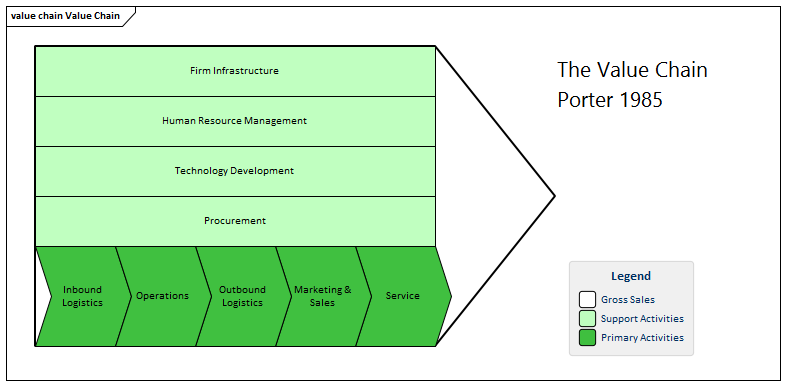| Prev | Next |
Value Chain
A Value Chain (Porter, 1985) examines the performance and cost of each value-creation activity within an organization. It is a tool that can be used for strategic planning purposes, to identify parts of an organization that provide the best value for customers and shareholders. A Value Chain is often used in conjunction with financial reporting to control cost drivers and identify areas that need improvement.
If a company can derive greater value from one of the activities in the Value Chain, they will be able to beat the competition, creating greater value for the shareholder and customer. For example: A business might have access to cheaper raw materials (Inbound Logistics), use a more efficient manufacturing process (Operations) or reduce transport and storage costs (Outbound Logistics). These primary activities are in turn supported by a number of secondary activities such as HR Management and Technology. A business is able to gain a competitive advantage by analyzing each activity in the chain, benchmarking the activity against the competition, improving processes, providing better differentiation and reducing costs.
Enterprise Architect is able to link each activity in the Value Chain to support documentation, including budgets and benchmark results. The ability to link to competitors' websites and web based market information extends the power of the Value Chain beyond a traditional text based model.
Creating a Value Chain

- The default Value Chain can be customized to reflect how your company operates
- You can easily modify the color of each activity using the 'Layout' ribbon, 'Style' panel

